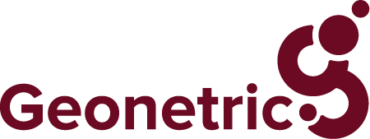This is the fifth and final article in our series highlighting the technological breakthroughs that shaped healthcare, marketing, and our work at Geonetric over our first 25 years in business. You can go back and read the other articles in this series, which cover 1999 – 2003, 2004 – 2008, 2009 – 2013, and 2014 – 2018.
When looking back on the history of digital healthcare marketing and healthcare in general, you’d be hard-pressed to find a period in history that has brought more rapid change than the last five years.
If you’re in the healthcare industry (and if you’re reading this, you probably are), you don’t need reminding of the ways the COVID-19 pandemic challenged your organization.
However, the pandemic brought along with it technological and marketing changes that persist today and will likely remain woven into our marketing strategies for years to come.
On top of that, these five years also brought with them a greater emphasis on mobile web functionality and a little piece of HIPAA guidance that threw us all for a loop.
2019
On July 1, 2019, Google started indexing new sites for mobile first before indexing the desktop versions.
This shift made it especially vital for digital marketers to ensure that any new websites they launched worked well on mobile and had quality content, images, videos, links, structured data and other metadata, in addition to functioning well for desktop users.
“There had been a couple of design trends at different points over the years where we’d say, ‘Ok, if 60% of our traffic is mobile, we should design the mobile experience and then back into what the desktop experience is going to look like,” explained Ben Dillon, CEO of Geonetric. “We’re seeing some app usage out there, but today, we’re certainly in a place where mobile web is a dominant piece of the experience.”
2020
The COVID-19 pandemic hit in 2020 and served as a catalyst for many healthcare organizations to pursue digital transformation — and pivot their marketing strategies to address virus, testing and vaccine information.
“It’s hard to wrap your head around the scope and just how major the shifts were going on,” said Dillon. “We’d have clients who said, ‘I need to put a project on hold because next week we’re opening a military-style field hospital in the parking garage, and I need to oversee that now.'”
For many healthcare marketers, the pandemic also identified gaps in their strategies for communicating with patients. Some organizations, Dillon recalled, didn’t even have a way to send email communications to all of their patients. That had to change, and fast, as communities turned to their local health systems and hospitals for guidance.
“For a lot of our hospitals, they became one of the central hubs of communication and information around the crisis in general. There were a bunch of things along the way that were really challenging from a communication perspective,” said Dillon. “I think marketing and communications got a seat at the table at the executive level that, in many cases, they hadn’t before that point in time because they didn’t think of communications as being a strategic asset to the organization. And suddenly, that lifeline to the community was really key.”
2021
As the COVID-19 pandemic continued, telemedicine options grew in popularity — by April 2021, 27% of American adults age 18 and older were utilizing telehealth services. However, with the rapid expansion of telemedicine also came the challenge of how healthcare organizations could master the technology, build patient trust, and explain the benefits through marketing.
“It was interesting to see as an industry that traditionally has thought of itself as not being particularly nimble and not really being able to adapt and innovate. We had clients with five-year plans to grow telemedicine that they were able to blow past within a few weeks once COVID-related shutdowns started,” said Dillon. “In terms of adoption of the tools and the ability to push it through multiple specialties, there was a rethinking of ‘What are the places where I actually need to go in and see you?'”
2022
In December 2022, the U.S. Department of Health and Human Services issued guidance on the use of marketing trackers, like Google Analytics or Meta Pixel, by HIPAA Covered Entities such as health systems and hospitals.
The guidance stated that Covered Entities are “not permitted to use tracking technologies in a manner that would result in impermissible disclosures of [protected health information] to tracking technology vendors or any other violations of the HIPAA Rules.”
This development raised the question of whether healthcare marketers could continue to use analytics to craft effective marketing messages and understand their audiences without running afoul of HIPAA.
Earlier this year, HHS released an updated guidance that raised more questions than answers, and the American Hospital Association recently received a summary judgment in its lawsuit that claimed the guidance exceeds HHS’ authority.
While we wait to see how things pan out, we encourage marketers not to make any knee-jerk decisions regarding their compliance tools and strategies. Instead, consider a tool like Geonetric Privacy Filter to give you peace of mind that your marketing strategies can be effective without compromising patient privacy.
2023
Generative AI has been creeping into marketing conversations for years now, but 2023 was the first year it truly became widely available for professional workflows. Companies like Apple, Adobe, and Canva have implemented AI tools across their creative suites, while many industries have argued over the ethics of incorporating AI into their daily work.
AI continues to be a hot topic for healthcare marketers, according to the results of our 2024 Healthcare Digital Marketing Trends Survey. Many marketers are wary of incorporating AI into their marketing efforts when they operate in such a heavily regulated industry, while others claim that it’d feel like “cheating” to use AI to generate content for their websites.
Whether you’re on board the AI train or not, it will play a major role in the marketing landscape over the coming years — we suggest reading up on how it will impact things like search engine optimization so you can learn how to use it in tandem with your marketing tools and prepare for the rise of AI search.
2024… and beyond
A lot has changed over Geonetric’s 25 years in business, and we anticipate even more rapid change over the next 25. If you want more insights into the future of healthcare marketing, be sure to download our 2024 Digital Healthcare Marketing Trends Survey eBook to learn how your colleagues are reacting to hot tech topics like generative AI, personalization, HIPAA compliance, and more.
If your organization is looking for a digital marketing guide that can help you meet your marketing goals and weather whatever tech changes are coming down the road, Geonetric is here to help. Contact our team today to learn more about our marketing and web development services, Geonetric Privacy Filter, and content management systems.












